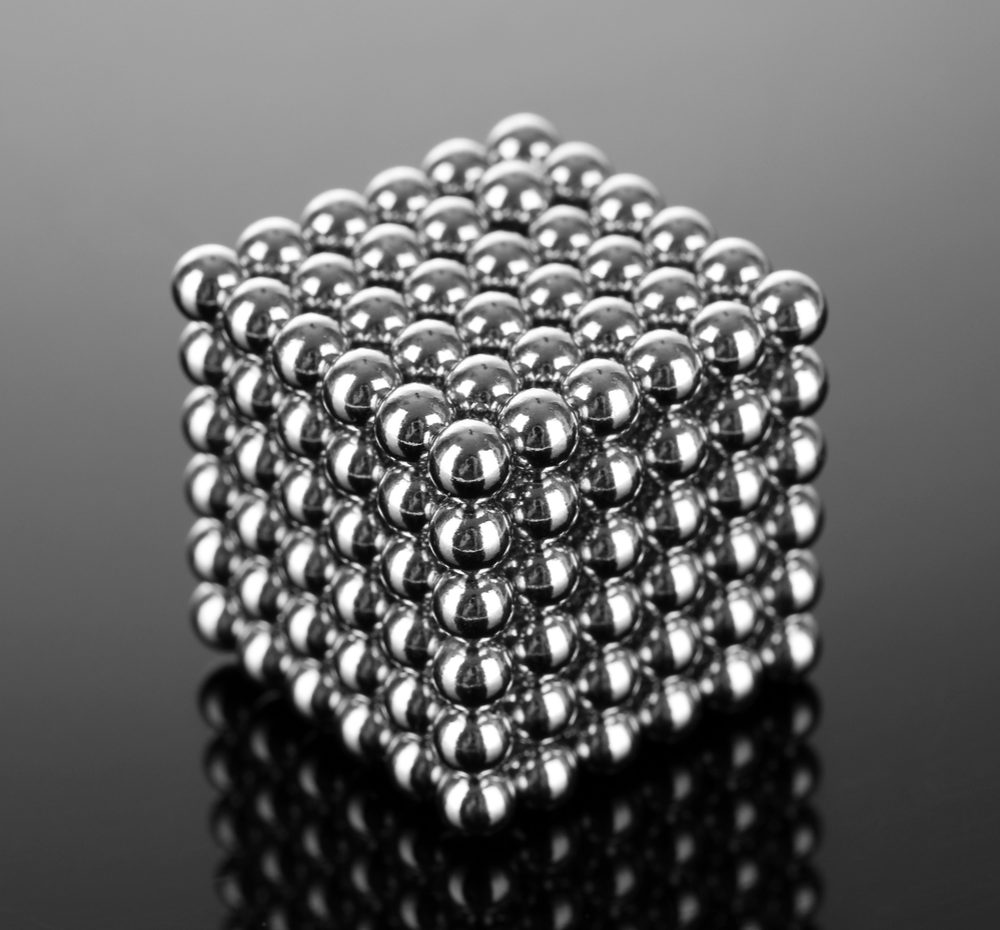Warning Labels Have Little Effect on High-Powered Magnet Ingestions, Study Finds
Despite magnet warnings, most consumers fail to appreciate the risks posed by high-powered magnet sets, which can cause serious side effects if accidentally swallowed

High powered magnets used in a number of consumer products have caused devastating injuries among children and mentally disabled adults in recent years, often occurring when one or more of the magnets are put into the mouth and accidentally swallowed. However, new research suggests warnings added by the manufacturers have done little to reduce the risk.
Rare earth metals are used to create powerful magnets in adult desk toys or building sets, which allow the small magnets to be connected and formed into various shapes and designs. However, problems have been reported involving injuries and deaths that resulted from accidentally swallowing the magnets, while attempting to simulate a pierced tongue or attracting the magnets through the cheeks, leading to serious medical emergencies when the magnets become attracted across intestinal walls.
Magnet ingestion Injury Risks
When the high-powered magnets are swallowed, they can attract to each other and other material, even through internal body tissue and across the intestinal tract. This can cut off the blood supply to various organs and lead to serious injuries, such as perforations to the intestine, twisting, blocked intestines, infections, blood poisoning and death.’
According to a magnet information center website published by the CPSC, nearly 3,000 children and teenagers swallowed the magnets and had to be treated in emergency rooms nationwide between 2009 and 2013.
The CPSC reports that more than 26,000 magnet ingestions were treated in hospital emergency rooms from 2010 to 2021. The cases have continued to rise every year since 2018, and have resulted in at least seven deaths from magnet ingestions; mostly involving toy magnet sets.
Study Finds Toy Magnet Warning Labels to be Ineffective
In a new study published this month in the medical journal Pediatrics, researchers from Nationwide Children’s Hospital in Ohio sought to determine whether existing warning labels on powerful toy magnet products are effective at helping consumers identify risks, and whether toys that contained more detailed warning labels were associated with fewer child ingestion injuries.
Researchers issued questionnaires to voluntary participants enrolled in the Injuries, Morbidity, and Parental Attitudes Concerning Tiny High-powered Magnets (IMPACT of Magnets), which is a multicenter study of individuals who have suffered magnet-related injuries from ingestion or bodily insertion.
Of the 596 patients, 174 participants responded to the questionnaire, which specifically asked whether they knew if the product had a warning label, if they read the warning label and whether they knew of the inherent dangers associated with toy magnets.
Responses indicated 53.6% of respondents reported not knowing whether the products had a warning label on them, indicating consumers may not even be reading the posted hazards. Furthermore, researchers found 44.3% of respondents believed the products were just kid’s toys and were not aware of the potential dangers.

Did You Know?
Millions of Philips CPAP Machines Recalled
Philips DreamStation, CPAP and BiPAP machines sold in recent years may pose a risk of cancer, lung damage and other injuries.
Learn MoreOf the 28 toy magnets with warning labels confirmed, only 13 consumers reported reading the labels, and only 6.9% knew high-powered magnets have been previously removed from the U.S. market.
Overall, 90% of the participants either did not know if warning labels were present, or failed to read them if they were present. The study authors claimed this data indicates warning labels on high-powered magnets are not a sufficient safeguard, as they are unlikely to prevent injuries to children.
Toy Magnet Safety Rules
In response to concerns about the devastating effects of high-powered magnet ingestions, the U.S. Consumer Product Safety Commission (CPSC) made attempts in to ban certain toy sets from the market in 2014.
The toy magnet safety rules, enacted in October 2014, came after several battles with manufacturers to get them to recall products after the CPSC determined that warnings provided were insufficient to avoid injuries. One of the magnet manufacturers, Zen Magnets, LLC, protested the new rules, and challenged them in court and won.
The US Court of Appeals for the Tenth Circuit overturned the ban in 2016, indicating the CPSC did not have enough data to show the magnets were unsafe, allowing the sale of magnet sets to continue. A day after the ruling, Zen Magnets and the U.S. Department of Justice entered into a consent agreement (PDF) on a $5.5 million civil penalty aimed at the company for illegally selling more than 400,000 recalled magnets. However, the details of the civil penalty required Zen Magnets to ultimately pay only $10,000.
Last month, new federal safety standard for toy magnet products were announced, which now require loose or separable magnets in certain products to be made too large to swallow, or magnetically weakened, to avoid the risk of internal injuries when swallowed.
If the magnets fit in a small parts cylinder, they must have a flux index (how magnet strength is measured) of less than 50 kG2 mm2.
Get more articles like this sent directly to your inbox.
"*" indicates required fields




0 Comments